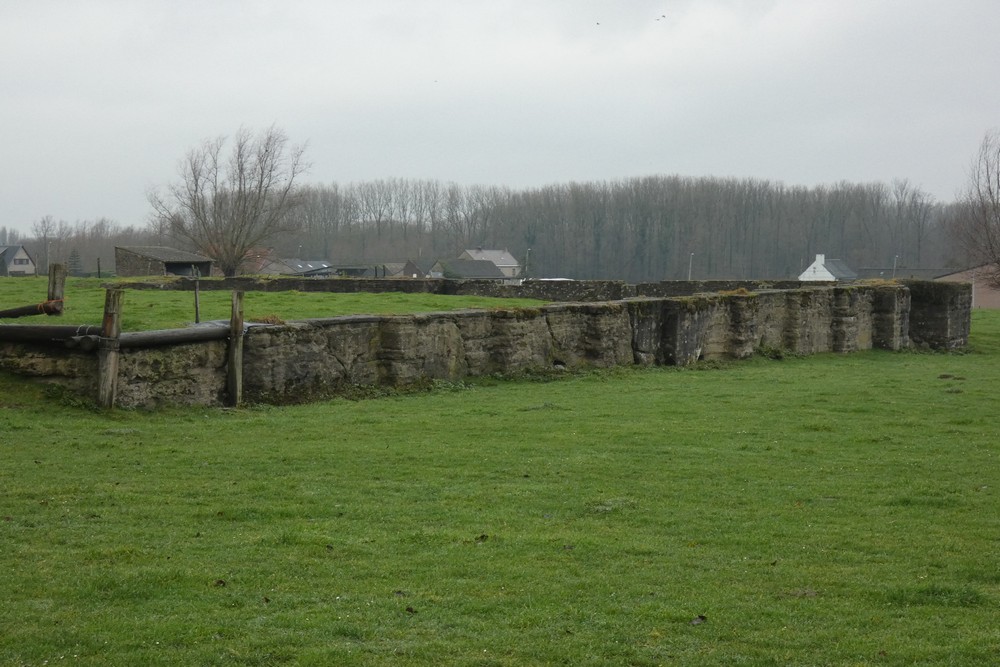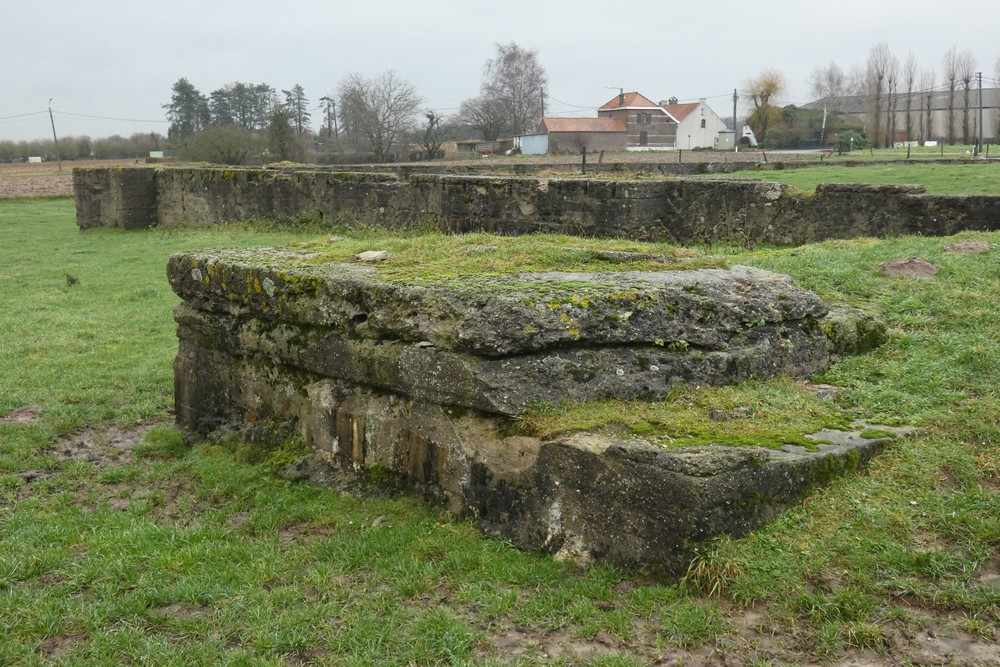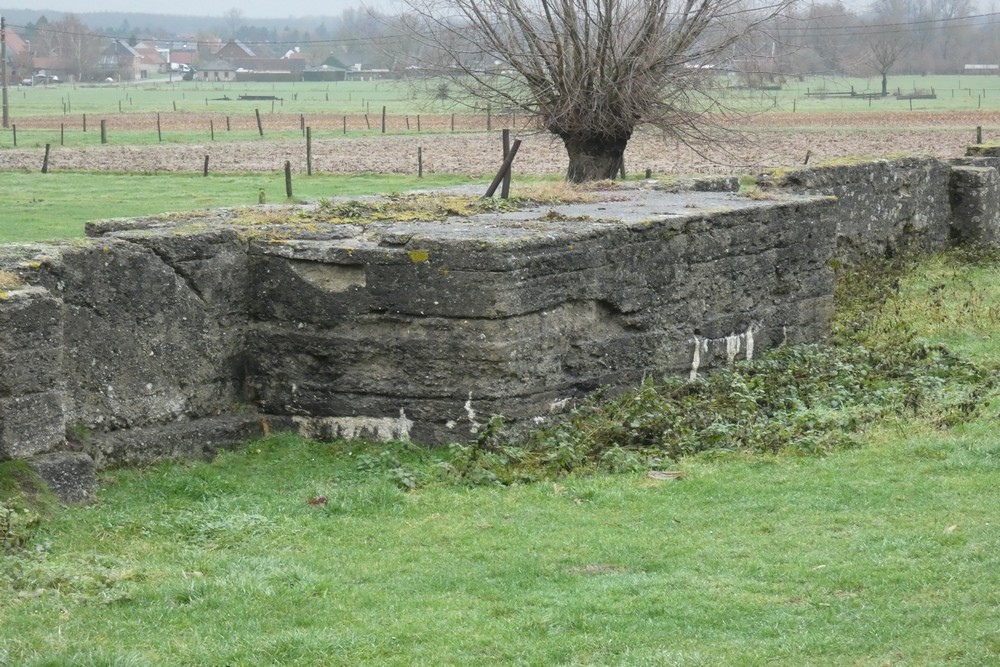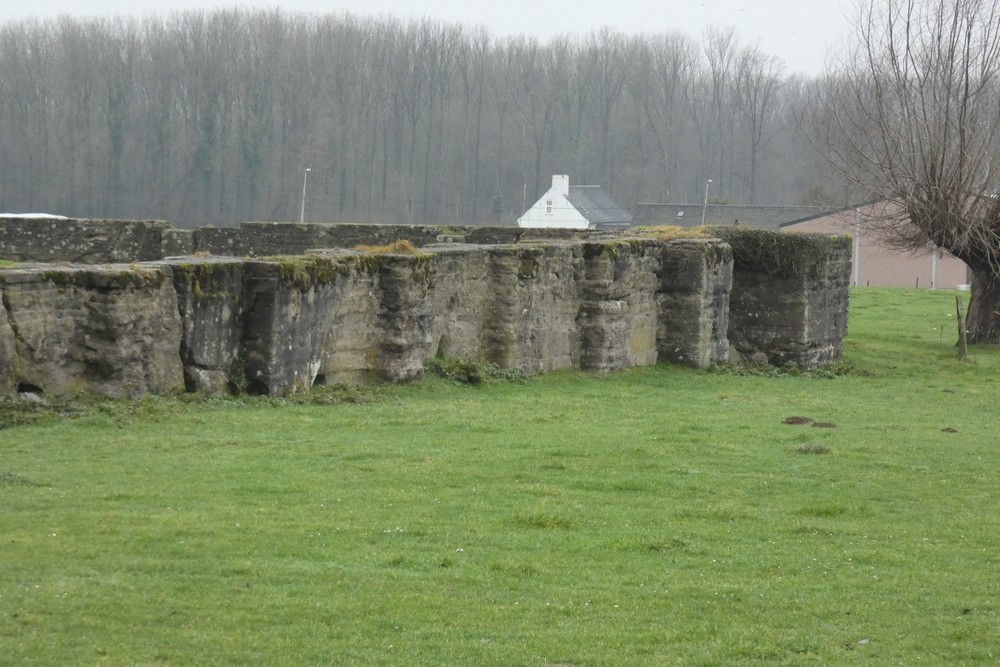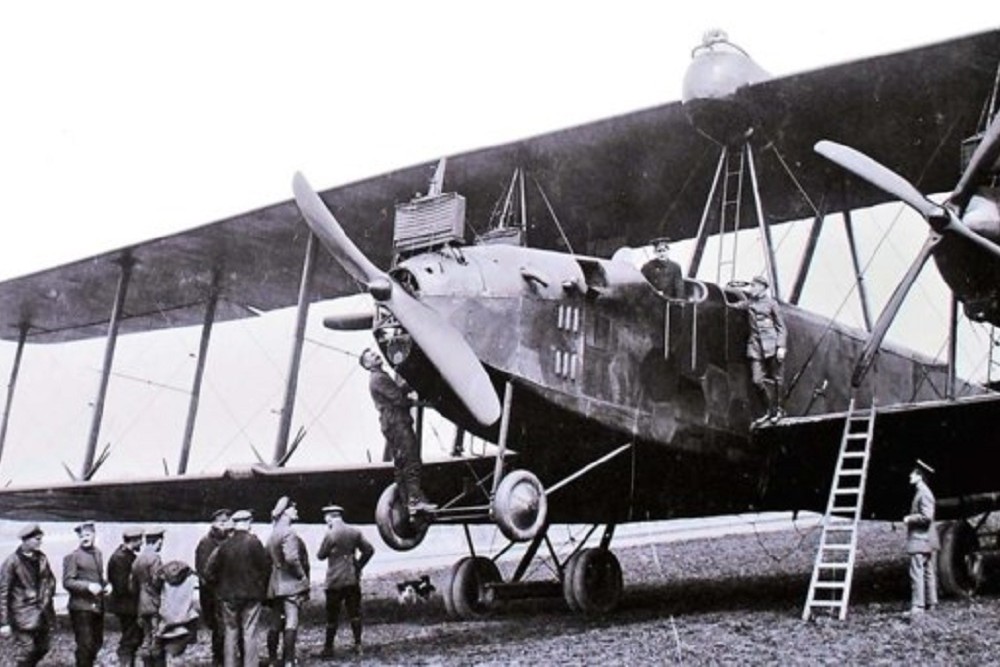Remains Eiserne Halle Scheldewindeke
Here was an airfield for one of the first big bombers, the German Zeppelin "Staaken" (see photo 5).
The flying square was the scene of the biggest air disaster of the First World War. The German "Riesenflugzeuge" or giant planes also took off from that airport. The war in the air has become increasingly important since 1915. The Germans considered Ghent and the surrounding area best suited for the construction of airports. After all, from that distance it was possible to fly to London and back loaded with bombs and fuel. The existing military training area in Sint-Denijs-Westrem was occupied by "die 4. Armee", later the airfield in Scheldewindeke-Dikkelvenne was added. The latter was built at the end of 1917 and early 1918. It was the most modern of its time, with a radio station, lighting and the first track in concrete.
The surfacing was necessary for the "Riesenflugzeuge" which carried 4 to 6 engines. The giant bombers hit London and northern France hard, supporting the 1918 German Spring Offensive to break the static trench warfare. The giant planes, armed with bombs, weighed about 13 tons and fell through the ground at other airports. At the airport of Sint-Denijs-Westrem, the Germans' first option, the soil turned out to be too soft. The high coulter ridge between Dikkelvenne and Scheldewindeke, on the other hand, turned out to be very suitable. Despite the harder ground of that plateau, the Germans decided to pour concrete as well. It may have been the world's first paved airport.
Disaster on Ascension Day
The heavy planes took quite some time on take-off to reach a safe height.
Everything that stood in the way was torn down. Even the Koortskapel in Blokstraat. It was rebuilt after the war. The people then said that the Germans paid dearly for the demolition of the chapel with a serious accident. The flying square was the backdrop to the biggest air disaster during the First World War. Three planes crashed on Ascension Day 1918 due to the thick fog. The pilots ignored the orders from the radio station and crashed into the trees in the Munkbos and the Kasteeldreef. After the crash on Ascension Day, the flights decreased and the Germans were also pushed back on land. On October 2, 1918, they cleared the airfield, heralding the Armistice more than a month later.
The airport was no longer used after WWI. The only known achievement after the war dates from May 21, 1940. During that day, a bomber made an emergency landing at the old German airfield.
Apart from a few foundation remains of a warehouse on the territory of Scheldewindeke, nothing remains of the airfield.
Do you have more information about this location? Inform us!
Source
- Text: Wim Hilderson
- Photos: Ricky Van Dyck
- https://www.nieuwsblad.be/cnt/dmf20170511_02877205
Nearby
Museum
Point of interest
- Halve Maanroute – information board 5, Battle of Gijzenzele - Gijzenzele (Oosterzele)
- Peace Tree Gijzenzele - Gijzenzele (Oosterzele)
- Halve Maanroute – information board 6, Battle of Gijzenzele - Gijzenzele (Oosterzele)
Monument
- Commemorative Plate War Victims Dikkele - Dikkele (Zwalm)
- War Memorial Baaigem - Baaigem (Gavere)
- Commemorative Plate First World War Beerlegem - Beerlegem (Zwalm)
Cemetery
- Belgian Graves Veterans Dikkele - Dikkele (Zwalm)
- Belgian Graves Veterans Baaigem - Baaigem (Gavere)
- Belgian Graves Veterans Munte - Munte (Merelbeke-Melle)
